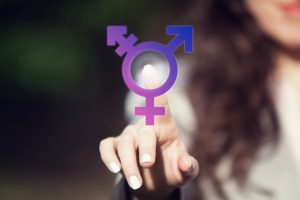LSAC Now Lists 11 Different Gender Identity Options For Pre-Law Students
Welcome to the future of the legal profession.
 It’s a whole new world out there for staid organizations within the legal profession, and faced with enduring pressure from millennials, things have finally started to change for the better.
It’s a whole new world out there for staid organizations within the legal profession, and faced with enduring pressure from millennials, things have finally started to change for the better.
Take, for example, a recent innovation that was made by the Law School Admission Counsel. Prospective law students across the country must register with LSAC before they can take the LSAT, and rather than having to select “male” or “female,” students interested in taking the exam are now offered a variety of gender identity options.


Law Firms Now Have A Choice In Their Document Comparison Software
It’s understandable if you’re unfamiliar with some of these terms, but there’s always time to learn new things. Professor Jonathan Turley of GW Law looked them up:
Agender refers to people who do not want to declare a gender or consider themselves genderless.
Androgynes are those people who have a gender which is both feminine and masculine, but not necessary in equal amounts.
Demigenders are those who claim a partial connection to a particular gender identity and can include people claiming to be a demigirl, and demiboy, and demiandrogyne.
LSAC also allows students to answer questions about their sexual orientation and pronoun preferences to “improve services and programs for law school candidates.”

Sponsored

Gain An Instant Understanding Of New Complaints With LexisNexis Snapshot

Law Firms Now Have A Choice In Their Document Comparison Software

AI’s Impact On Law Firms Of Every Size


Diving Into Generative AI: A Practical Guide For Law Firms Starting From Scratch
Congratulations to LSAC on finally joining the future of the legal profession. Not only is it much nicer, but it’s also more diverse and inclusive here, we promise.
LSAT provides 12 different gender identity options, including ‘genderqueer,’ ‘unsure’ and ‘demigender’ [College Fix]
 Staci Zaretsky is a senior editor at Above the Law, where she’s worked since 2011. She’d love to hear from you, so please feel free to email her with any tips, questions, comments, or critiques. You can follow her on Twitter or connect with her on LinkedIn.
Staci Zaretsky is a senior editor at Above the Law, where she’s worked since 2011. She’d love to hear from you, so please feel free to email her with any tips, questions, comments, or critiques. You can follow her on Twitter or connect with her on LinkedIn.
Sponsored

Diving Into Generative AI: A Practical Guide For Law Firms Starting From Scratch








